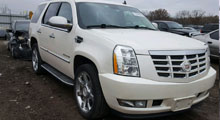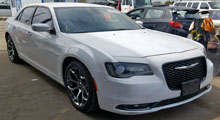A Guide to Finding Excellent Personal Car Loans
Whether you’re buying new or used, chances are a car purchase is the second most expensive thing you’re ever going to buy in your life, second only to your home. Because buying a car puts massive financial strain on a person or a family, most people choose to finance their purchase when buying a vehicle.
Because of how automotive loans work though, even a 1% increase in interest rate can have massive consequences five or ten years down the line. Buying a car is something you should do with your head, not your heart. If you’re not a fan of wasting money, it’s extremely critical to shop around and find the best possible car loans available
What are personal loans?
Before we delve deeper into car loans and how they work, let’s take a look at personal loans and what they are. A personal loan, also called an unsecured loan, is a service where you borrow money from a lender, agreeing to pay it back over a fixed period in set monthly intervals. Think of it like splitting the total cost into smaller, much more manageable chunks you can deal with.
The obvious downside is that the lender will charge you interest as their fee for lending you the money, so in the end, you’ll be repaying more than what you’ve borrowed (an interest on top of the borrowed sum). The advantages are obvious though. You get cash upfront when you need it, and you don’t have to borrow money from friends or family.
What about car loans?
Personal car loans work in a similar fashion, i.e. you’re borrowing money to purchase a car. Right now, with interest rates being at a near all-time low, it’s a great opportunity to take out a loan if you need to purchase a new car. Loans work similarly to how every other car finance option works: you pay a set amount each month to the lender, over a fixed amount of time (for instance five years).
The main difference between personal car loans (unsecured) and other types of finance plans is that with personal loans, you get to own the car outright. With most finance plans, the vehicle is used as a placeholder for security reasons. This means that if you don’t pay or miss one too many payments, the lender has a right to take the car back. You only own the car once you finish your last payment.
With unsecured loans, the car is yours from the beginning. You make a deal with the lender to repay the loan, so the car has nothing to do with the agreement. The title is in your name, and you can choose to do whatever you want with it.
Understanding the critical terms and definitions
Now that you know how loans work, it’s time to go over some important terms and phrases you need to be familiar with. If you’ve never had to deal with personal loans or any sort of finance deals, pay close attention, because understanding these terms can make the difference between striking a great deal, and overpaying a high-interest loan for the next few years of your life.
APR – Annual Percentage Rate
You hear the term APR thrown around a lot, but not a lot of people know what it means. To put it simply, APR indicates the interest you’ll pay on your loan. It’s how much money you’re paying directly to the lender, on top of returning the loan you’ve borrowed.
Loan Term
The loan term indicates how long until you pay back the loan in full. For example, if it’s a three-year-long loan term, you’ll be making payments for exactly three years, i.e. 36 months.
Money Factor
Explaining the money factor is a complicated subject, but here’s a quick way of looking at it: a money factor is an alternate way of representing the APR we just talked about. To convert it to APR, multiply the money factor by 2,400. So, if you have a factor of 0,003 for instance, you’re looking at a 7.2% interest loan.
Credit History or Credit Score
Before you can take out a loan, you need to be approved. Most lenders require a certain level of reputability before they decide to lend you the money. It’s their way of making sure you won’t default or defect. For most people with an average credit score, this won’t be an issue, but if you have bad credit, you may have trouble finding lenders willing to work with you.
Crunching the numbers
The most important number is the APR because it ultimately determines how much interest you’re going to pay. A shorter loan is going to cost less than a longer one because you’re paying less accumulated interested due to having less total monthly payments. Choosing a longer loan is tempting, but it’s not always the right choice in the long run. As a general rule of thumb, pick a plan where the monthly payments are the maximum amount of money you can comfortably afford. That way, you have less total monthly payments and can pay out the loan much sooner.
Tips and tricks
Car dealers will try to recommend a repayment option, but just remember that they’re not always looking out for your best interests. Even a trustworthy dealership might try to get you to sign a sponsored deal or squeeze a little more commission out of you.
If you’ve got bad credit, unfortunately, you might have to settle for a higher APR. Another option is building up your credit score and taking out a loan then, but that could take some time and is an entirely separate subject to cover altogether.
Last but not least, consider a used car if you haven’t already. I know new cars are tempting, but two-to-three year old cars are just as good and most of the depreciation hits have already been taken by their first owners.





